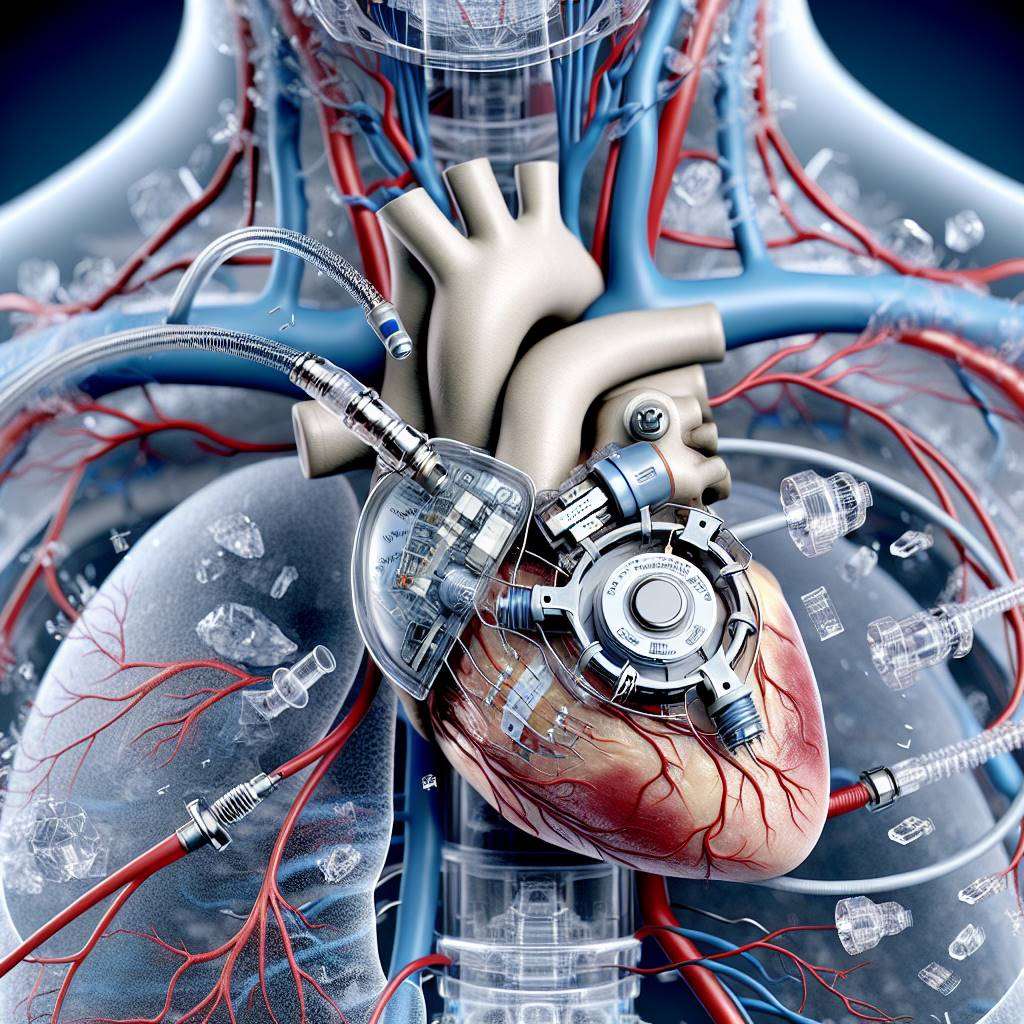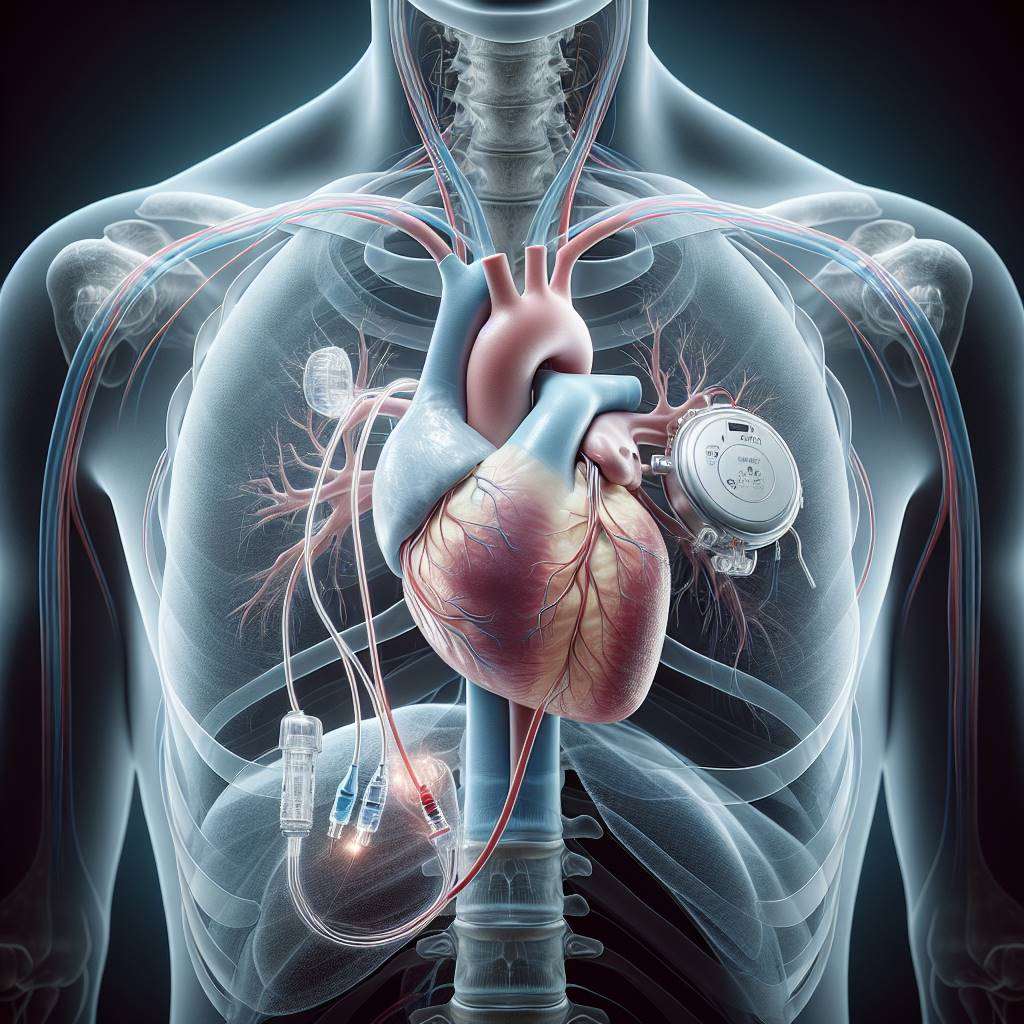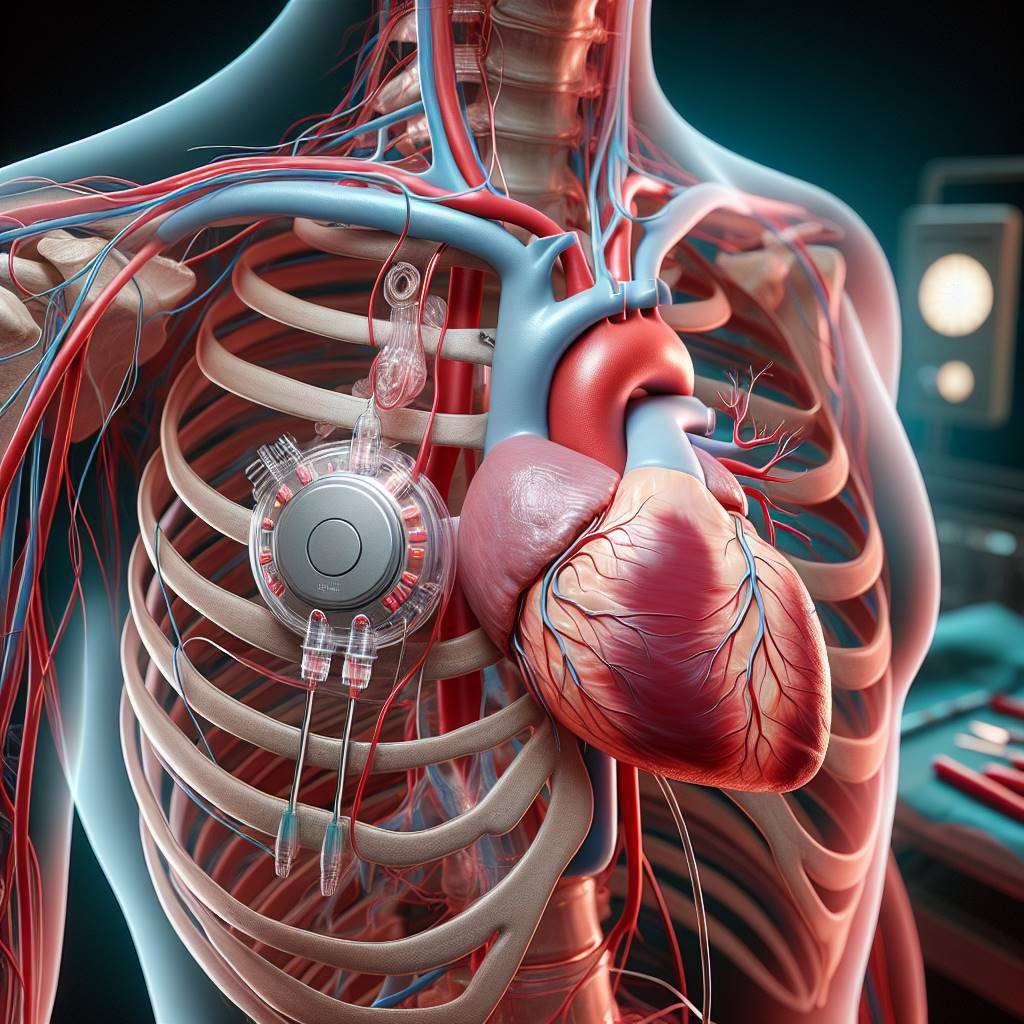A pacemaker and a defibrillator (ICD) are two critical medical devices used to manage heart rhythm disorders. While both are implanted in patients with irregular heartbeats, their functions differ significantly. Understanding these differences is essential for patients and caregivers to make informed decisions about treatment options.
These devices play a vital role in treating conditions like arrhythmias and preventing life-threatening complications such as sudden cardiac arrest. By knowing how a pacemaker and defibrillator work, patients can better understand their heart health and the importance of timely intervention. This article explains their key differences, uses, and who might need them.
What Is a Pacemaker and How Does It Work?
A pacemaker is a small, battery-operated device implanted under the skin, usually near the chest. Its primary function is to regulate a slow or irregular heartbeat, a condition known as bradycardia. The device sends electrical impulses to the heart to maintain a steady rhythm, ensuring that the heart pumps blood effectively.
Pacemakers are often recommended for patients experiencing symptoms like fatigue, dizziness, or fainting due to a slow heart rate. Modern pacemakers can adjust the heart rate based on the patient’s activity level, providing a more natural rhythm. They are typically used in conditions such as heart block or sick sinus syndrome, where the heart’s natural electrical system is impaired.
The implantation procedure is minimally invasive, and most patients can resume normal activities within a few weeks. Regular follow-ups are essential to monitor the device's performance and battery life.

Understanding Defibrillators (ICDs): Purpose and Function
A defibrillator, also known as an implantable cardioverter defibrillator (ICD), is designed to prevent sudden cardiac arrest by correcting life-threatening arrhythmias. Unlike a pacemaker, which regulates slow heartbeats, an ICD monitors the heart for dangerously fast rhythms, such as ventricular tachycardia or ventricular fibrillation, and delivers a shock to restore normal rhythm.
ICDs are often recommended for patients with a history of heart failure, previous cardiac arrest, or those at high risk of developing fatal arrhythmias. The device continuously tracks the heart's electrical activity and responds immediately to abnormal rhythms, potentially saving the patient’s life.
The implantation process for an ICD is similar to that of a pacemaker, but the device is slightly larger due to its additional functionality. Patients with ICDs require regular check-ups to ensure the device is functioning correctly and to monitor battery life.
Pacemaker vs. Defibrillator: Key Differences in Function
While both pacemakers and defibrillators are used to manage heart rhythm disorders, their functions and purposes differ significantly. A pacemaker primarily addresses slow or irregular heartbeats by sending electrical impulses to maintain a steady rhythm. In contrast, a defibrillator (ICD) is designed to detect and correct dangerously fast heart rhythms by delivering a shock.
The following table highlights the key differences between these devices:
| Feature |
Pacemaker |
Defibrillator (ICD) |
| Primary Function |
Regulates slow or irregular heartbeats |
Corrects life-threatening fast rhythms |
| Conditions Treated |
Bradycardia, heart block |
Ventricular tachycardia, ventricular fibrillation |
| Shock Delivery |
No |
Yes |
Both devices are life-saving, but the choice depends on the patient’s specific heart condition and risk factors. Consulting a cardiologist is crucial for determining the most appropriate treatment.
Who Needs a Pacemaker? Common Medical Conditions Explained
A pacemaker is typically recommended for patients with conditions that cause a slow or irregular heartbeat. One of the most common conditions is bradycardia, where the heart beats too slowly to pump enough blood to the body. Other conditions include heart block, where the electrical signals between the heart’s chambers are disrupted, and sick sinus syndrome, where the heart’s natural pacemaker malfunctions.
Symptoms that may indicate the need for a pacemaker include fatigue, dizziness, shortness of breath, and fainting. These symptoms occur because the heart is unable to maintain an adequate blood supply to the body. A pacemaker helps restore normal heart function, improving the patient’s quality of life.
If you experience these symptoms or have been diagnosed with a heart rhythm disorder, consult a cardiologist to determine if a pacemaker is the right solution for you.
When Is a Defibrillator (ICD) the Right Choice?
A defibrillator (ICD) is recommended for patients at high risk of sudden cardiac arrest due to life-threatening arrhythmias. Conditions such as ventricular tachycardia, ventricular fibrillation, or a history of cardiac arrest often warrant the use of an ICD. Patients with severe heart failure or those who have survived a heart attack may also benefit from this device.
Unlike a pacemaker, an ICD continuously monitors the heart’s rhythm and delivers a shock only when a dangerous arrhythmia is detected. This immediate response can prevent fatal outcomes and provide peace of mind for patients and their families.
If you have been diagnosed with a high-risk heart condition, your doctor may recommend an ICD to protect you from sudden cardiac arrest. Regular follow-ups are essential to ensure the device is functioning correctly and to address any concerns.
How Pacemakers and Defibrillators Help Manage Heart Conditions
Both pacemakers and defibrillators (ICDs) play a crucial role in managing heart conditions, especially for patients with irregular heart rhythms. A pacemaker is designed to regulate a slow or irregular heartbeat by sending electrical impulses to the heart. On the other hand, a defibrillator monitors the heart rhythm and delivers a shock if it detects a life-threatening arrhythmia, such as ventricular fibrillation.
These devices are lifesaving for individuals with conditions like bradycardia, atrial fibrillation, or a history of sudden cardiac arrest. While both devices address heart rhythm issues, their functions are distinct. Pacemakers primarily focus on maintaining a steady heartbeat, whereas defibrillators are designed to prevent sudden cardiac death by correcting dangerous rhythms.

Pacemaker vs. ICD: Which Device Is Right for You?
Choosing between a pacemaker and an implantable cardioverter defibrillator (ICD) depends on your specific heart condition. A pacemaker is typically recommended for patients with slow heart rhythms or heart block, where the electrical signals in the heart are delayed or blocked. It ensures the heart beats at a regular pace.
In contrast, an ICD is suitable for individuals at risk of sudden cardiac arrest due to conditions like ventricular tachycardia or ventricular fibrillation. It can detect and correct dangerous arrhythmias by delivering a shock to restore normal rhythm.
Your cardiologist will evaluate your medical history, symptoms, and diagnostic tests to determine the best device for your needs. Both devices can significantly improve quality of life and reduce the risk of life-threatening complications.
Can a Pacemaker and Defibrillator Be Used Together?
Yes, a pacemaker and defibrillator can be used together in a single device known as a cardiac resynchronization therapy defibrillator (CRT-D). This combination is often recommended for patients with advanced heart failure or those who require both rhythm regulation and protection from sudden cardiac arrest.
The pacemaker component ensures the heart beats at a steady rate, while the defibrillator component monitors for and corrects life-threatening arrhythmias. This dual functionality is especially beneficial for individuals with complex heart conditions.
Using both technologies in one device can improve heart function, reduce symptoms of heart failure, and enhance overall survival rates. Your doctor will assess your condition to determine if a CRT-D is the right option for you.
Risks and Benefits of Pacemakers vs. Defibrillators
Both pacemakers and defibrillators offer significant benefits, but they also come with potential risks. Pacemakers improve symptoms like fatigue and dizziness caused by slow heart rhythms, enhancing overall quality of life. Defibrillators, on the other hand, are lifesaving devices that prevent sudden cardiac death by correcting dangerous arrhythmias.
However, there are risks associated with these devices, including infection at the implantation site, device malfunction, or lead displacement. Defibrillators may also deliver unnecessary shocks, which can be distressing for patients.
| Device |
Benefits |
Risks |
| Pacemaker |
Regulates slow heart rhythms, reduces symptoms |
Infection, lead issues |
| Defibrillator |
Prevents sudden cardiac death |
Unnecessary shocks, device complications |
Discussing these risks and benefits with your cardiologist will help you make an informed decision about your treatment.
How Are Pacemakers and Defibrillators Implanted?
The implantation of a pacemaker or defibrillator is a minimally invasive procedure performed under local anesthesia. During the procedure, the doctor makes a small incision near the collarbone and inserts the device under the skin. Leads (thin wires) are guided through a vein into the heart to deliver electrical signals.
The procedure typically takes 1–2 hours, and patients can usually return home the same day or the next. Recovery involves avoiding strenuous activities and monitoring the incision site for signs of infection. Regular follow-ups are essential to ensure the device is functioning correctly.
Implanting these devices is a safe and effective way to manage heart rhythm disorders, providing patients with a better quality of life and peace of mind.
Cost of Pacemakers and Defibrillators in India
The cost of a pacemaker or defibrillator (ICD) in India can vary significantly based on the type, brand, and hospital. Pacemakers are generally more affordable, with prices starting around ₹50,000, while ICDs, being more advanced, can cost ₹3–5 lakhs or more.
Factors influencing the cost include the device's features, such as single or dual-chamber functionality, and whether it includes advanced monitoring capabilities. Additionally, hospital charges, surgeon fees, and post-operative care can add to the overall expense.
Patients should consult their cardiologist to understand the best option for their condition and budget. Many hospitals also offer insurance coverage or EMI options to make these life-saving devices more accessible.

Signs You May Need a Pacemaker or Defibrillator
Recognizing the signs that you may need a pacemaker or defibrillator is crucial for timely treatment. Symptoms often include chronic fatigue, dizziness, fainting, or a slow or irregular heartbeat. These could indicate an underlying arrhythmia or heart block.
For patients at risk of sudden cardiac arrest, an ICD may be recommended. Warning signs include a history of heart attacks, a weak heart muscle, or episodes of ventricular tachycardia. A pacemaker, on the other hand, is typically used to treat bradycardia or heart block.
- Unexplained fainting or dizziness
- Shortness of breath during mild activity
- Heart palpitations or irregular rhythms
If you experience any of these symptoms, consult a cardiologist immediately for a thorough evaluation.
Battery Life and Maintenance: Pacemaker vs. ICD
The battery life of a pacemaker or ICD is a critical factor for patients. Pacemakers typically last 5–15 years, depending on usage and the type of device. ICDs, due to their advanced functionality, often have a shorter lifespan of 5–7 years.
Regular follow-ups with your doctor are essential to monitor the device's performance. During these visits, the battery status and device settings are checked. When the battery is low, a replacement procedure is scheduled, which is less invasive than the initial implantation.
Patients should avoid strong electromagnetic fields, as these can interfere with the device's function. Always carry your device card and inform healthcare providers about your pacemaker or ICD before undergoing any medical procedures.
Living with a Pacemaker or Defibrillator: What to Expect
Adjusting to life with a pacemaker or defibrillator can take time, but most patients resume normal activities within weeks. After implantation, you may need to avoid heavy lifting and strenuous activities for a short period.
Patients are advised to avoid close proximity to strong magnets or electrical devices, such as MRI machines or high-voltage equipment, as these can interfere with the device. Regular follow-ups with your cardiologist are essential to ensure the device is functioning correctly.
Many patients report improved quality of life after implantation, with fewer symptoms like fatigue or dizziness. It's important to maintain a heart-healthy lifestyle, including a balanced diet, regular exercise, and stress management, to support your overall health.
Pacemaker and ICD FAQs: Answers to Common Questions
Patients often have questions about pacemakers and ICDs. Here are some common queries:
- Can I travel with a pacemaker or ICD? Yes, but inform airport security as metal detectors can interfere with the device.
- Will I feel the device working? Pacemakers are usually not noticeable, but ICDs may cause a brief shock during arrhythmia correction.
- How often are follow-ups needed? Typically every 6–12 months, or as advised by your doctor.
Always consult your cardiologist for personalized advice and to address any concerns about living with these devices.
Best Pacemaker Surgery Doctors in India
Dr. Balbir Singh, Chairman of Cardiology at Max Super Speciality Hospital, Saket, is a renowned expert in pacemaker implantation with over 30 years of experience. Another leading specialist is Dr. Naresh Trehan, Chairman of Medanta - The Medicity, Gurugram, with extensive expertise in cardiac surgeries and international recognition. Both doctors are celebrated for their medical excellence and patient-centric care.
Learn more on best pacemaker implantation surgery doctors in india
Best Pacemaker Surgery Hospitals in India
Fortis Escorts Heart Institute, New Delhi, and Apollo Hospitals, Chennai, are among the top hospitals for pacemaker implantation in India. Both are NABH and JCI-accredited, offering advanced cardiac care, including minimally invasive procedures. These hospitals are known for their multidisciplinary teams, cutting-edge technology, and international patient services.
Find more best pacemaker implantation surgery hospitals in india
Pacemaker Surgery Cost in India
The cost of pacemaker implantation in India typically ranges from INR 2,00,000 to INR 5,00,000 (approximately USD 2,500 to USD 6,000). Factors such as the type of pacemaker, hospital category, and doctor’s expertise influence the cost. Patients benefit from shorter hospital stays and significant cost savings compared to Western countries. Medical insurance and third-party financing options are widely available.
Learn pacemaker implantation surgery cost in india
Pacemaker Surgery Treatment in India
Pacemaker implantation in India involves a minimally invasive procedure performed under local anesthesia. The device is placed under the skin, and leads are connected to the heart. Advanced technologies, including 3D mapping and robotic assistance, ensure precision. Recovery typically takes a few days, with most patients resuming normal activities within a week. Indian hospitals adhere to global medical standards and offer innovative care.
Learn on Pacemaker Surgery Treatment in India
FAQs
What is the primary difference between a pacemaker and a defibrillator?
A pacemaker regulates slow or irregular heart rhythms, while a defibrillator (ICD) delivers shocks to correct life-threatening arrhythmias like ventricular fibrillation.
Can a pacemaker and defibrillator be combined?
Yes, a device called a CRT-D (Cardiac Resynchronization Therapy with Defibrillator) combines both functions to manage heart failure and prevent sudden cardiac arrest.
How long do pacemakers and defibrillators last?
Pacemakers typically last 5 to 15 years, while defibrillators last 5 to 7 years, depending on usage and battery life.
Is the implantation procedure painful?
The procedure is minimally invasive and performed under local anesthesia. Patients may experience mild discomfort during recovery, which subsides within a few days.
Are there any risks associated with these devices?
Risks include infection, lead displacement, or device malfunction. However, these are rare when performed by experienced specialists.
Can I undergo an MRI with a pacemaker or defibrillator?
Modern devices are often MRI-compatible. However, it is essential to confirm with your doctor before undergoing an MRI scan.
How soon can I resume normal activities after implantation?
Most patients can resume light activities within a week. However, strenuous activities and heavy lifting should be avoided for 4-6 weeks.
Do these devices require regular maintenance?
Yes, regular follow-ups are necessary to check device function and battery life. Remote monitoring options are also available for convenience.
What happens if the device malfunctions?
Modern devices are highly reliable. In rare cases of malfunction, the device can be reprogrammed or replaced by your cardiologist.
Are these devices covered by insurance?
Yes, most health insurance policies in India cover the cost of pacemaker or defibrillator implantation. It is advisable to confirm with your insurer for specific details.
Understanding Pacemakers: Safety and Pediatric Considerations
Pacemakers have become essential devices for managing heart rhythm disorders, but understanding their safety and specific applications is crucial. One significant concern for patients with pacemakers is their compatibility with MRI scans. To learn more about this, check out our blog on how MRI-safe modern pacemakers are, which discusses the advancements in technology that enhance safety during imaging procedures.
Additionally, pacemakers are not one-size-fits-all, especially when it comes to pediatric patients. Pediatric pacemakers differ significantly from adult implants in terms of size, functionality, and the specific needs of younger patients. For a deeper understanding of these differences, read our article on pediatric pacemakers and how they cater to the unique requirements of children.
By staying informed about these topics, patients and caregivers can make better decisions regarding heart health and treatment options.